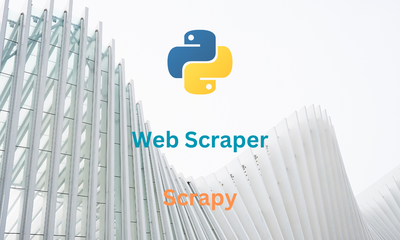Python Scraper using Requests and Beautiful Soup
By hientd, at: March 14, 2023, noon
Estimated Reading Time: __READING_TIME__ minutes


Web scraping is the process of extracting data from websites automatically. In Python, web scraping is done with the help of libraries like Requests and Beautiful Soup. In this article, we will discuss how to use these libraries to scrape websites, along with their pros and cons.
Sample code can be found here
1. Introduction to Requests and Beautiful Soup
Requests is a Python library that is used for making HTTP requests to websites. Beautiful Soup is a Python library that is used for parsing HTML and XML documents.
Installation of Requests and Beautiful Soup
Both libraries can be installed using pip, which is the Python package installer. Open the command prompt or terminal and type the following command to install Requests and Beautiful Soup:
pip install requests
pip install beautifulsoup4
2. Steps to perform web scraping with Requests and Beautiful Soup
The following are the basic steps for web scraping using Requests and Beautiful Soup
- Send an HTTP request to the URL of the webpage you want to access.
- The server responds to the request by returning the HTML content of the webpage.
- Once you have accessed the HTML content, use Beautiful Soup to parse the HTML, extract the relevant information, and store it in a variable.
Let's say we want to scrape the title and description of a webpage. Here's how you can do it using Requests and Beautiful Soup:
import requests
from bs4 import BeautifulSoup
url = 'https://example.com'
# Send an HTTP request to the URL of the webpage you want to access
response = requests.get(url)
# Parse the HTML content using Beautiful Soup
soup = BeautifulSoup(response.content, 'html.parser')
# Extract the title and description of the webpage
title = soup.title.string
description = soup.find('meta', attrs={'name': 'description'})['content']
print(title)
print(description)
In this example, we first import the Requests and Beautiful Soup libraries. Then, we specify the URL of the webpage we want to scrape. Next, we send an HTTP request to the URL using the requests.get() method and store the response in a variable called response. We then use Beautiful Soup to parse the HTML content of the response using the BeautifulSoup() method.
We can then use Beautiful Soup to extract the title of the webpage using the soup.title.string method. Similarly, we can extract the description of the webpage by searching for the meta tag with the name 'description' using the soup.find() method.
3. Pros and cons of Requests and Beautiful Soup
Pros
- Requests and Beautiful Soup are easy to use and have a shallow learning curve.
- Requests allows us to easily make HTTP requests to websites and retrieve the HTML content.
- Beautiful Soup allows us to parse the HTML content and extract the relevant information.
Cons
- Requests and Beautiful Soup do not support JavaScript, so we cannot scrape websites that rely heavily on JavaScript for their content.
- Requests and Beautiful Soup are slower compared to other web scraping libraries like Scrapy.
4. Conclusion
Requests and Beautiful Soup are great libraries for beginners who want to learn web scraping in Python. However, if you need to scrape websites that use JavaScript heavily, you may need to use other libraries like Selenium WebDriver. It's also important to remember the ethical considerations of web scraping, including obtaining permission and not scraping sensitive information.





